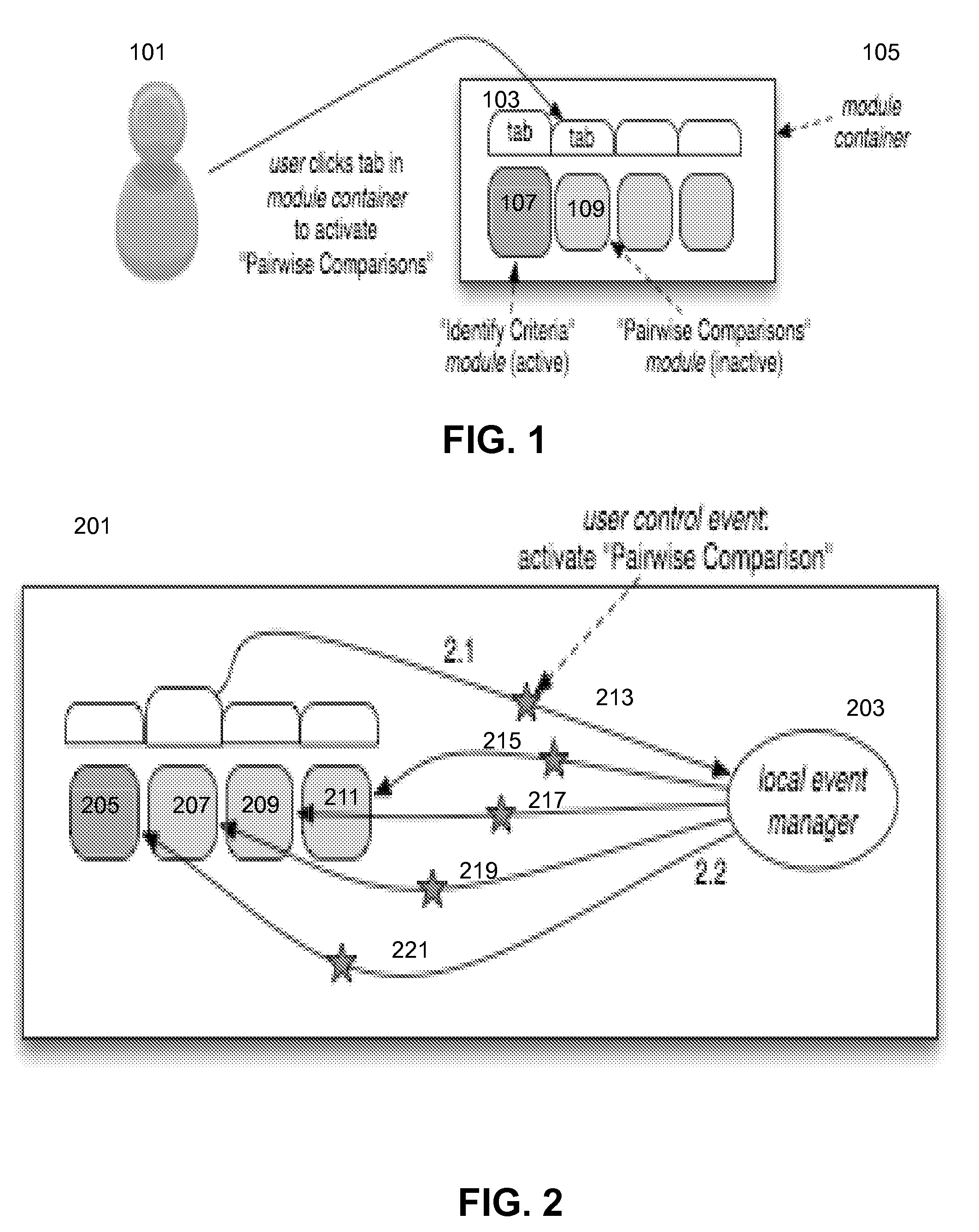Data and event synchronization across distributed user interface modules
a distributed user interface and event synchronization technology, applied in the field of computer networks, can solve the problems of slowing down, insufficient software solutions, and easy desynchronization of user control of user interfaces
- Summary
- Abstract
- Description
- Claims
- Application Information
AI Technical Summary
Benefits of technology
Problems solved by technology
Method used
Image
Examples
example embodiment 1
[0105]The following example describes one possible embodiment, herein within a web-distributed application, for example, a decision support system sometimes referred to hereafter as “DL3.” Familiarity is assumed with decision support software available from Decision Lens, Inc. In this example, a user intends to add additional criteria to the criteria tree and to adjust the available pairwise criteria comparisons accordingly. This embodiment is simple, to illustrate basic concepts.
[0106]The modules in this embodiment include:[0107]“Identify Criteria”—This module encapsulates the user interface controls and data visualization components related to building a criterion tree. This module displays the current criteria tree, as retrieved from the centralized data server, and provides controls for adding and removing criteria to and from the tree.[0108]“Pairwise Comparison”—This module encapsulates the user interface controls and data visualization components related to voting on pairwise ...
example embodiment 2
[0227]Referring now to FIG. 19, a block diagram illustrating portions of a second embodiment of a computer constructed for use in being synchronized with plural applications will be discussed and described. The second embodiment has the same elements illustrated as the computer in FIG. 13, except that reference numbers begin with “19 . . . ” instead of “13 . . . ” (for example, computer 1301 is computer 1901). In FIG. 19, a detailed illustration of contents of 1st local module 1917 and 2nd local module 1925 are not illustrated due to lack of space. The elements which were discussed in connection with FIG. 13 may be omitted from the following discussion so as to avoid obscuring the discussion.
[0228]In comparison to FIG. 13, it will be noted that FIG. 19 shows a 1st application 1913 (illustrated in FIG. 13; parts in this figure are omitted from the illustration) and additionally shows 2nd application 1973. The 2nd application 1973 can include, for example, a 1st module container 1975,...
PUM
 Login to View More
Login to View More Abstract
Description
Claims
Application Information
 Login to View More
Login to View More - R&D
- Intellectual Property
- Life Sciences
- Materials
- Tech Scout
- Unparalleled Data Quality
- Higher Quality Content
- 60% Fewer Hallucinations
Browse by: Latest US Patents, China's latest patents, Technical Efficacy Thesaurus, Application Domain, Technology Topic, Popular Technical Reports.
© 2025 PatSnap. All rights reserved.Legal|Privacy policy|Modern Slavery Act Transparency Statement|Sitemap|About US| Contact US: help@patsnap.com



